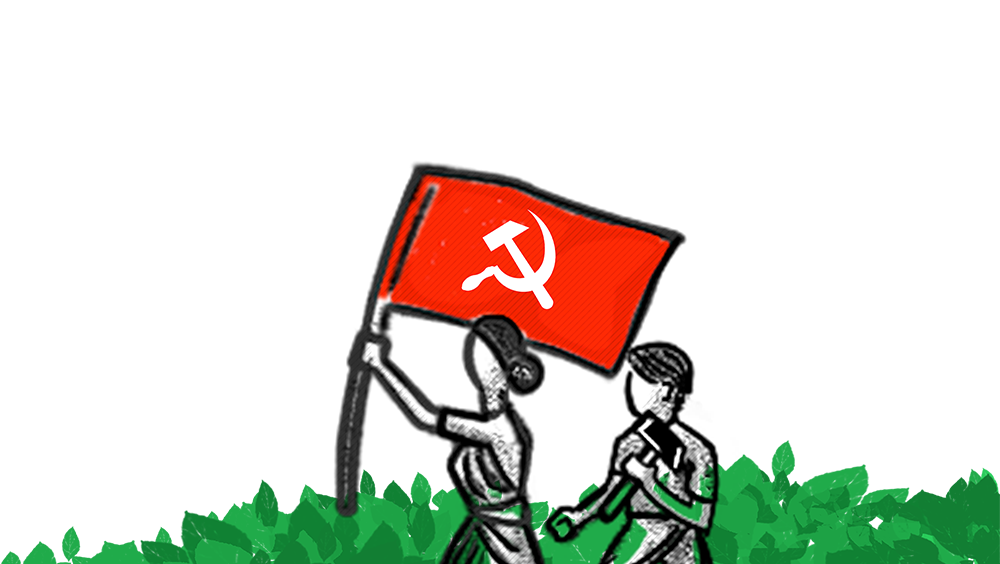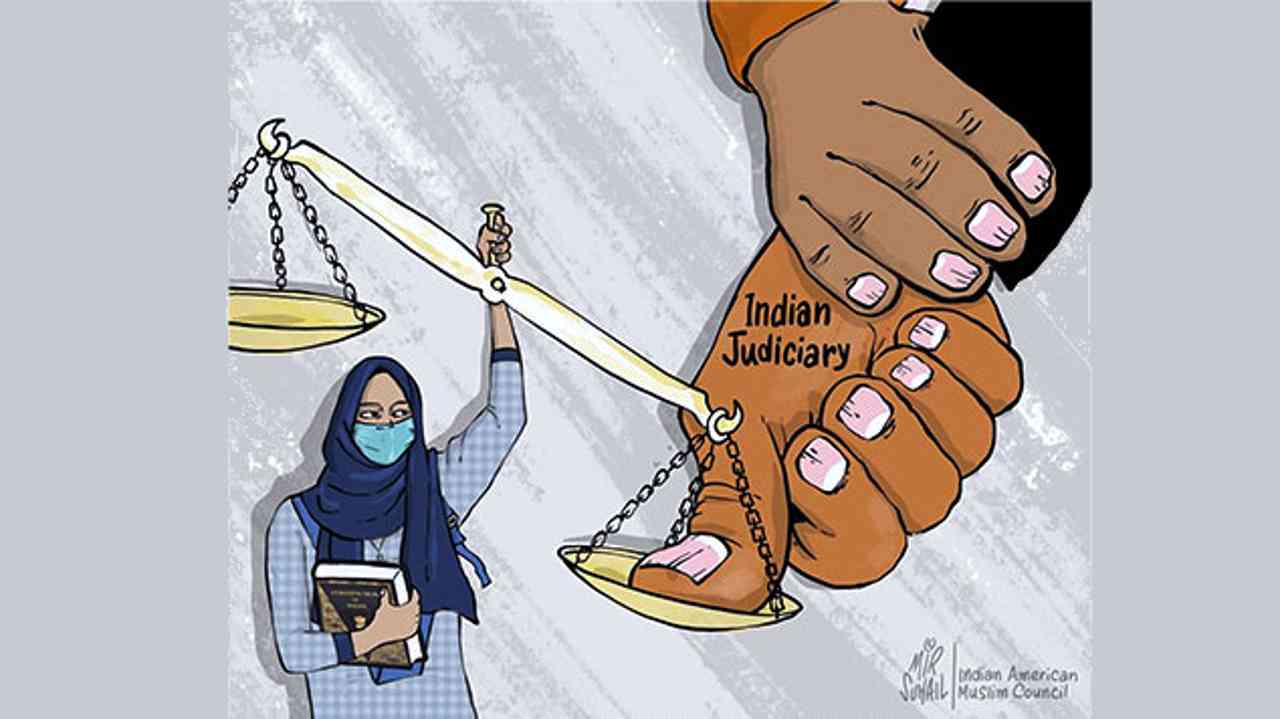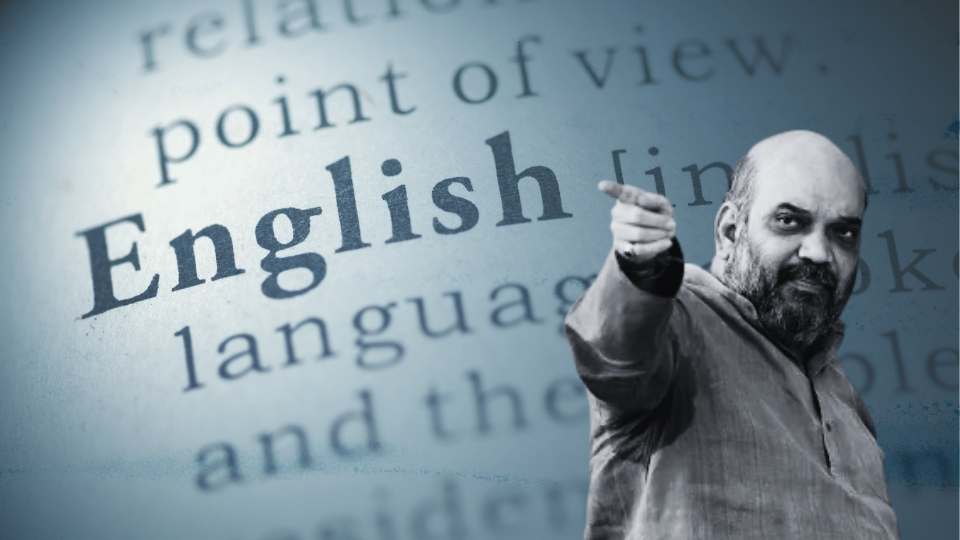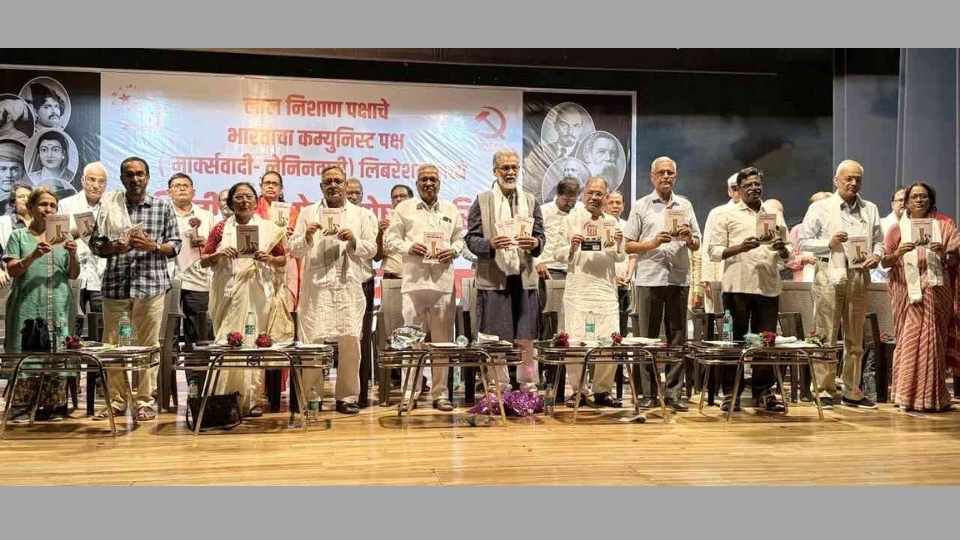9 years of Indian Judiciary in Modi’s India
In the center of the counter-revolution stood the judiciary. Unlike administrative acts, which rest on considerations of convenience and expediency, judicial decisions rest on law, that is on right and wrong, and they always enjoy the limelight of publicity. Law is perhaps the most pernicious of all weapons in political struggles, precisely because of the halo that surrounds the concepts of right and justice.” - Franz Neumann, Behemoth
The independence of the judiciary is a basic feature of the Constitution and of paramount importance to a functional democracy. It forms a vital component of the doctrine of separation of powers, whereby the organs of State are intended to check excesses of other organs.
In a context of executive excess, the constitutional courts’ mandate, particularly that of the Supreme Court, is to defend the Constitution and prevent concentration of power – to ensure accountability and secure individual liberty. This structure of separation in itself implies a constant struggle for dominance by each organ – the legislature, executive and the judiciary. Ever since the supersession of judges who differed with the executive standpoint during the Emergency, the Indian judiciary started establishing primacy through a series of judgments and in holding, to an extent, the governments accountable. However, in the past 9 years, since Modi’s ascendance to power in 2014, we are witness to a largely compromised judiciary.
Judgments passed and judgments avoided
The judgments passed by the Supreme Court, post 2014, confirms a sharp trend of judicial complicity with the Modi government’s agenda with some notable exceptions (judgements that have developed constitutional jurisprudence around women’s rights, LBGTQIA+ rights, the right to privacy, among others).
Modi’s claim of fighting black money was challenged by the seizure of the infamous Birla and Sahara papers by the Income Tax Department, which revealed possible bribery and corruption and contained entries of regular payments being made to union ministers and ministers in state governments. An NGO, Common Cause, moved the Supreme Court in a PIL seeking that a criminal case be registered and the investigation to be monitored by the Court. The Supreme Court, in an extraordinary order did not merely dismiss the case. Instead the Court declared that the “materials in question are not good enough to constitute offences to direct registration of FIR” thereby foreclosing any investigation into the explosive claims of bribery made in the Birla and Sahara papers. Similar was the fate of the Rafale deal case where a court-monitored probe was sought into the corruption allegations over the deal, which too came to be dismissed.
Perhaps one of the most controversial judgments passed by the Supreme Court in recent times is in the Judge Loya case. In 2014, Judge B.H. Loya, who was presiding over the case of the alleged 2005 encounter killing of Sohrabuddin Sheikh, died under mysterious circumstances. A petition was filed seeking independent investigation into his death. Notably, Judge Loya’s family went on record questioning the circumstances surrounding his death, and alleged that he was offered Rs 100 crore to give a favourable judgment to the accused, Amit Shah. In a judgment authored by present CJI Justice DY Chandrachud, the Supreme Court converted this plea for an independent investigation into a mini trial and dismissed the case holding that Justice Loya had died of natural causes. Justice AP Shah, Former Delhi High Court Chief Justice and former Chairman of Law Commission of India, publicly condemned the judgment as “utterly wrong and jurisprudentially incorrect on so many counts”.
Another judgment of considerable import, is the Bhima Koregaon case, against the arrest of well-known human right activists, who were arrested under the Unlawful Activities (Prevention) Act, 1967 for allegedly being members of the banned organisation, Communist Party of India (Maoist) and for allegedly inciting violence at Bhima Koregaon. Despite the evidence being unreliable, and the prosecution story obviously concocted, a majority bench of the Supreme Court rejected the plea to constitute a Special Investigation Team (SIT) probe into the allegations. Justice Chandrachud, gave the dissenting opinion, holding the investigation conducted thus far to be tainted. Furthermore this judgment has enabled the prolonged incarceration of the Bhima Koregaon accused even as the trial has not commenced despite the passage of five years after arrest. Indeed, the shrinkage of civil liberties is also witnessed in the long-drawn incarcerations of a number of anti-CAA protestors.
The Constitutional Bench judgement in the Babri Masjid case found that the demolition of Masjid was an “egregious violation of the rule of law’ but awarded the land to the Hindu majority, prioritising so-called beliefs over criminal action of illegal demolition. The fact that the apex court has chosen to hand over the entire land for construction of a temple while advising the Sunni Wakf Board to relocate the mosque privileges the claims of faith over facts and principles of justice, and potentially incentivising communal campaigns.
The failure of the Supreme Court to stand in defence of migrant workers during pandemic continues to be one of the darkest moments of the Indian judiciary. Retired Supreme Court judge, Gopal Gowda called this the “Supreme Failure”.
In Zakia Jafri’s case, the Supreme Court faced further ignominy by dismissing the challenge to the SIT’s clean chit to Modi for his role in the 2002 Gujarat pogrom. The Court not only blamed Teesta Setalvad for allegedly exploiting Zakia Jafri’s pain, but also stated that she and others who contradicted the Gujarat police’s narrative be put “in the dock” for their efforts. Within 24 hours, the Gujarat Anti-Terrorism Squad filed FIRs against Teesta Setalvad, R.B. Shreekumar and others, and arrested them. Similar was the treatment meted by the Supreme Court to Gandhian activist Himanshu Kumar who had approached the court seeking independent investigation into the deaths of Adivasis by security forces in Chhattisgarh. The Supreme Court unfairly alleged that he had falsely accused security forces of being involved and fined him Rs 5 lakhs.
The Supreme Court continued its attack on civil liberties through its judgment on the Prevention of Money Laundering Act (PMLA) where the Supreme Court has upheld several draconian provisions of the PMLA, including a twin test for bail that had previously been struck down as unconstitutional, as well as the reversal of the burden of proof and approved the unbridled powers for the Enforcement Directorate including not giving the accused a copy of the ECIR (FIR equivalent), as well as being able to use statements recorded during questioning as valid evidence against them.
In the Supreme Court judgement upholding the 10% quota for Economically Weaker Sections (EWS), effectively, the Constitutional policy of reservation for socially backward sections was significantly diluted by provided reservation for forward classes. Socially backward classes, who are economically weaker are not permitted to avail reservation. The criterion for availing benefit is monthly income of less than 67,000/- a month – making a mockery of real poverty of oppressed communities.
These judgments give a glimpse into the mindset of a Court that is acquiescing with the policy prescriptions and political agenda of the ruling dispensation.
While talking of the judgments passed by the Supreme Court, we cannot but refer to the cases in which judgements have been avoided, what Constitutional lawyer Gautam Bhatia refers to as “judicial evasion”, where time sensitive constitutional challenges are avoided till the state policy is fait accompli. In this manner, the Hijab review, whereby the policy of the BJP Karnataka Government preventing girl students from wearing hijab is under challenge; the constitutional challenge to the Citizenship (Amendment) Act which gives differential citizenship rights on the basis of religion, the challenge to the abrogation of Article 370, where through state brute force, the state of Jammu and Kashmir was forcibly converted into two union territories without autonomy, the challenge to electoral bonds scheme that allows for anonymous corporate funding to political parties, and many other cases have been kept pending while the BJP reaps the benefit of unconstitutional action. In the demonetization case, after avoiding taking up the matter on merits till the question was no more than academic, the court upheld the entire process, ignoring the great miscarriage of justice caused by it.
The sometimes compromised, sometimes contested terrain of judicial appointments
The appointment of judges to the constitutional courts has become an arena of a complicated tussle. The BJP government, has been consciously undermining the existing collegium system in two ways. First, by attempting to appoint representatives sympathetic to its cause and second by returning collegium recommendations of those who are critical of the Union Government.
The tussle between the executive and the judiciary for primacy in appointment of judges is not recent. Post-Independence, the executive decided who became judges. After some minor rumblings, the conflict heightened in 1973 when Indira Gandhi, in breach of established convention, appointed the fourth most senior judge as Chief Justice, superseding his three senior colleagues. This was followed by the supersession of Justice HR Khanna; a punishment for his dissent in the ADM Jabalpur case. These executive actions established the clear nexus between the appointment of judges and their obedience to the government in power.
The primacy enjoyed by the executive lasted until 1993, when the Supreme Court passed a judgment wresting the power to appoint judges under the collegium system. This collegium system, is where a forum of senior most judges appoint new judges to the constitutional courts. The system is no doubt riddled with flaws – blatant nepotism together lack of representation of Dalits, minority community members, women and other marginalized groups result in the judiciary being a male dominated, upper class, upper caste, Hindu entity from its very conception.
Even against this backdrop, the Modi government’s attempt to dominate the judiciary will only prove more disastrous to judicial independence. On coming to power the Modi government attempted to take control of judiciary by introducing the National Judicial Appointments Commissions Act, which was stuck down by the Supreme as unconstitutional.
Soon after the Modi took power, the name of Gopal Subramaniam, erstwhile Solicitor General who was suggested for elevation by the collegium, was returned by the Government. He was amicus in the Supreme Court in several cases and had taken strong stances in the Sohrabuddin, Kauser Bi and Tulsiram Prajapati fake encounter cases, where Amit Shah was chargesheeted. After the Modi Government refused his appointment as Supreme Court judge, he withdrew consent for elevation, stating “I am fully conscious that my independence as a lawyer is causing apprehensions that I will not toe the line of the Government. This factor has been decisive in refusing to appoint me."
Another prime example of such fractures in the collegium system can be seen with Justice Akil Kureshi, who retired without being elevated to the Supreme Court, despite having seniority and competence over others elevated. Justice Kureshi was fiercely independent and had in fact directed police custody of current Union Home Minister Amit Shah in 2010 in the Sohrabuddin Sheikh encounter. He was overtly targeted, firstly by transfer to Bombay High Court to prevent him becoming acting Chief Justice of Gujarat High Court; secondly, the Modi Government refused to comply with the collegium’s recommendation to appoint him as Chief Justice of Madhya Pradesh High Court. Tellingly, the judiciary succumbed and instead recommended his appointment to the Tripura High Court. Despite his seniority he was not elevated to Supreme Court.
Justice Muralidhar, a sitting judge of Delhi High Court, faced a midnight transfer to Punjab & Haryana HC on the same day he pulled up the Delhi Police for failing to register FIRs against three BJP leaders for hate speeches that led to riots in Delhi.
Recently, the Modi Government has stalled the appointment of three advocates recommended for judgeship to the High Courts. Advocate Somasekhar Sundaresan from Bombay High Court has not yet been appointed for the sole reason that he allegedly shared an article critical of Modi. Advocate John Sathyan of Madras High Court has not been appointed since he is allegedly critical of the Modi Government policies. In the case of Advocate Saurabh Kirpal from Delhi High Court, the reason for stalling his appointment is his sexual orientation and commitment to gay rights. In fact, the Collegium rejected the objections raised by the Modi Government and reiterated their appointments, despite which, it is being stalled.
On the other hand, the General Secretary of the Bharatiya Janata Party Mahila Morcha, Victoria Gowri has been appointed as Judge in the Madras High Court, and a petition challenging her appointment was rejected.
Post-retirement benefits
Post retirement assignments, particularly to retired judges of the Supreme Court who are known for judgments protected Modi’s policies and the Sangh Parivar’s agenda, have become the norm.
Former Chief Justice of India, Ranjan Gogoi, who once said “There is a viewpoint that post-retirement appointment is itself a scar on judicial independence of the judiciary”, accepted nomination to Rajya Sabha by the BJP government just four months after his retirement. During his tenure, he was part of several judgments that benefitted the Modi government, including the Babri Masjid demolition case, Rafale deal case and most importantly the Assam NRC judgment.
Another post-retirement beneficiary whose judgments worked in favour of the Modi government is Justice Arun Mishra, the present chairperson of the National Human Rights Commission. To appoint him, the Modi government went as far to amend the Human Rights Act, 1993. Besides judgements that blatantly favored the Modi regime, Arun Mishra is also infamous for publicly declaring Modi as an “internationally acclaimed visionary and a versatile genius who thinks globally and acts locally”.
The latest beneficiary is Justice Abdul Nazeer, who was appointed as the Governor of Andhra Pradesh merely 39 days after retiring from the Supreme Court. Justice Nazeer was part of judgments that displayed a strong tendency to favour the executive including the Babri Masjid demolition case, the demonetization case and the case on hate speech where he held that the government cannot be held vicariously liable for hate speech by Ministers.
Conclusion
The judiciary demands sharper scrutiny, as fascism unfolds around us. Senior counsel Indira Jaisingh, in a recent lecture expressed grave concern at how the current regime has replaced core constitutional values without amending the Constitution, and poignantly described this as the move from ignoring the Constitution to repudiating it.
Some of the judgments passed in recent times confirms the suspicion of Prof Mohan Gopal, former Vice-Chancellor of the National Law School of India, that the Courts are being packed with “theocratic judges” who perversely interpret the Constitution as a Hindu Constitution. Here we must remember the concerted efforts of the Akhil Bharatiya Adhivakta Parishad (ABAP), the Advocates organisation of the RSS to firstly build a consensus amongst the legal fraternity for its ideology and secondly in ensuring that those sympathetic to its agenda are in the constitutional courts. This concerted endeavor to subvert the judiciary has to be fought, to protect what Ambedkar, in the Constituent Assembly, famously declared - that the judiciary ought to have independence as is necessary for the purpose of administering justice without fear or favour.





